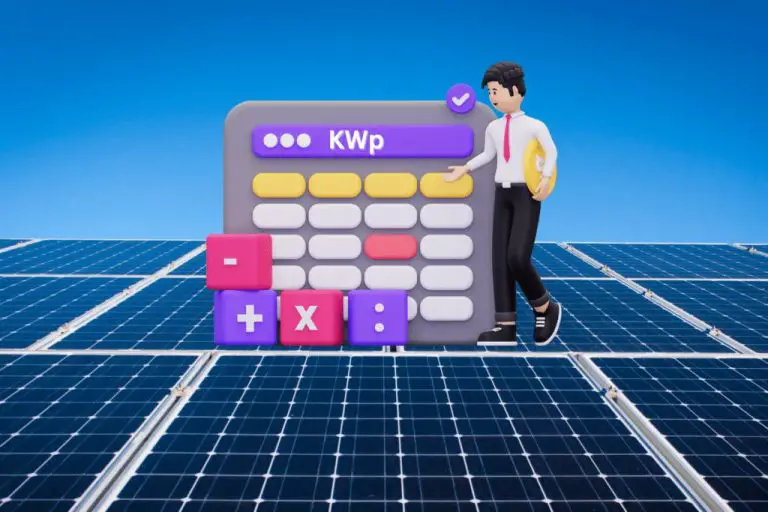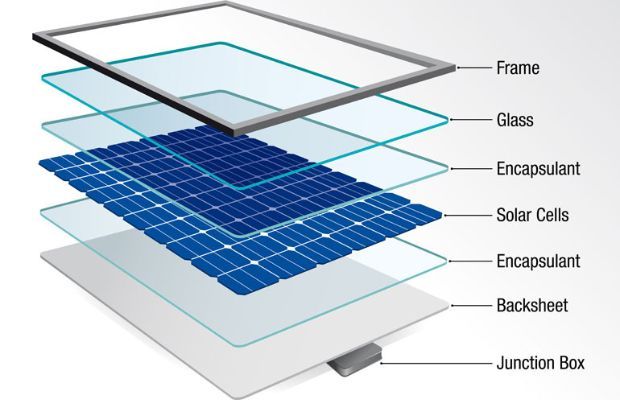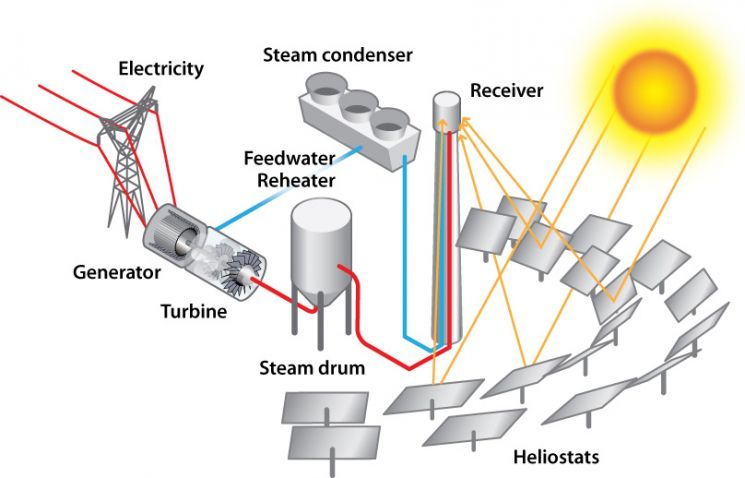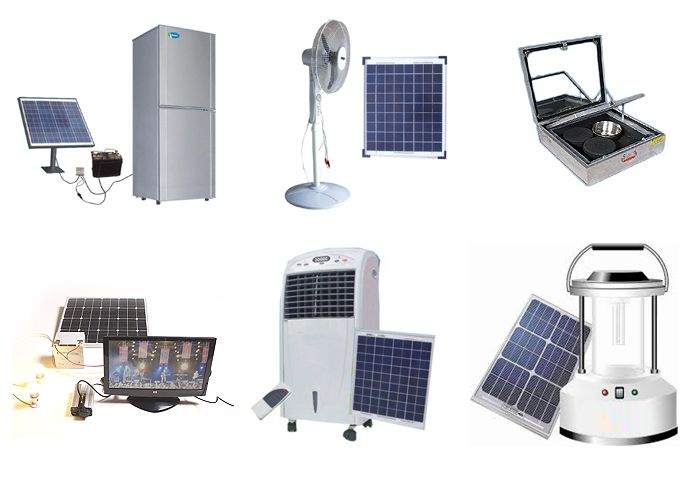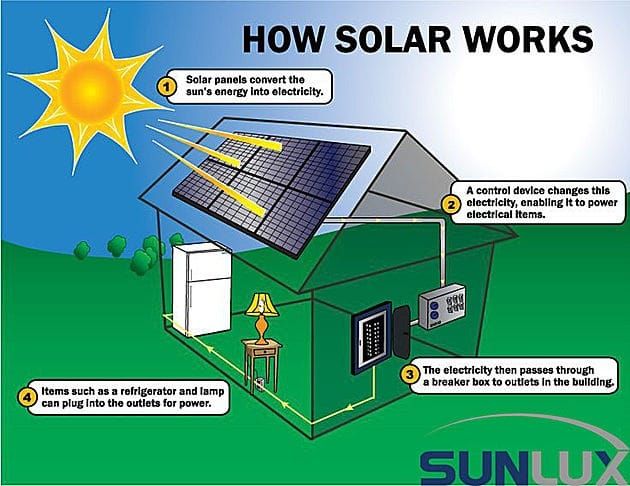When Producing Solar Energy Mirrors Are Used To?
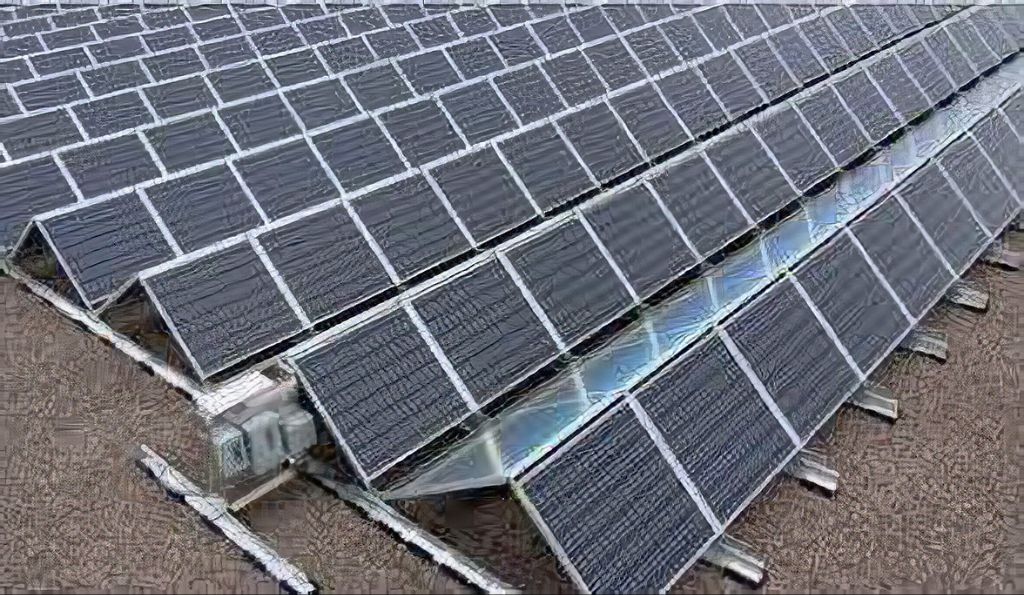
Solar thermal energy utilizes mirrors or reflectors to concentrate sunlight onto a receiver where it is converted into heat. The concentrated sunlight, or solar thermal energy, can be used as a heat source for a variety of applications. Mirrors allow a large area of sunlight to be focused onto a small area, intensifying the energy and converting it into higher temperatures. The heat generated can then be used directly, or used to produce steam to drive turbines for generating electricity.
Concentrating Solar Power
Concentrating solar power (CSP) systems use mirrors or lenses to concentrate a large area of sunlight onto a small area to generate heat and electricity (Energy.gov, 2022). The concentrated sunlight heats a fluid, such as oil or molten salt, in a receiver. The heated fluid is then used to generate steam to power a traditional turbine and generator to produce electricity (Wikipedia, 2022).
CSP technologies allow solar energy to be stored thermally and generate electricity even when the sun is not shining. This allows CSP to provide base load and dispatchable power. CSP plants can also easily hybridize with natural gas or biogas when needed (Energy.gov, 2022).
The four main types of CSP technologies are parabolic trough systems, solar power towers, dish/engine systems, and linear Fresnel reflector systems. CSP takes up a large footprint of land but offers higher efficiency than photovoltaics. The major advantage of CSP over photovoltaics is the thermal energy storage allowing electricity production even during cloud cover or at night.
Parabolic Trough Systems
Parabolic trough systems are one of the most prevalent types of concentrating solar power systems. As described by SolarPACES (https://www.solarpaces.org/how-csp-works/), they utilize parabolically curved, trough-shaped reflectors to concentrate sunlight onto a receiver tube that runs along the focal line of the trough. The concentrated sunlight heats up a heat transfer fluid inside the receiver tube to temperatures up to 750°F (400°C). The hot fluid is then used to generate steam to power a turbine generator and produce electricity.
According to ScienceDirect (https://www.sciencedirect.com/topics/engineering/parabolic-trough), the trough-shaped reflectors concentrate sunlight typically by a factor of 60-80 onto the receiver tube. This concentrated radiation allows the heat transfer fluid to reach much higher temperatures than it would using only direct solar radiation. The parabolic shape of the reflectors focuses the sunlight along the linear focal line where the receiver tube is located.
Overall, parabolic trough systems utilize curved mirrors and concentrated solar radiation to produce high temperature heat that can be used to generate electricity. The trough shape focuses sunlight onto the receiver tube running along the focal line.
Solar Power Towers
Solar power towers, also known as central tower power plants or heliostat power plants, use hundreds of flat, movable mirrors called heliostats to focus sunlight onto a receiver at the top of a tall tower. The focused light heats up a transfer fluid, which is used to generate steam to power a turbine and generator (Power Tower System Concentrating Solar-Thermal).
The heliostats track the sun throughout the day to optimize the sunlight reflection onto the tower receiver. The taller the tower, the more heliostats that can be arranged around it. Having more heliostats focused on the central receiver means more solar energy can be collected and converted to electricity.
Solar power towers with thermal energy storage can operate for extended periods during cloudy weather or at night. The molten salt transfer fluid allows thermal energy to be stored efficiently, so power generation can continue even when the sun isn’t shining (Solar power tower).
Dish/Engine Systems
Dish/engine systems use a parabolic dish made of mirrors to concentrate sunlight onto a receiver that sits at the focal point. The dish tracks the sun during the day to keep the sunlight focused on the receiver. The most common type of receiver used in dish/engine systems is a Stirling engine. The concentrated sunlight heats the working fluid in the Stirling engine to power a generator and produce electricity (Energy.gov, 2022).
The parabolic dish design allows for high concentration ratios, enabling the system to reach higher temperatures than other CSP technologies. The concentrated sunlight can reach temperature over 750°C. This high temperature heat is ideal for running a Stirling engine at optimal efficiency. Some key advantages of dish/engine systems are their high efficiency, modular design, and autonomous operation (Concentrating.cz, 2022).
Overall, the parabolic dish and Stirling engine work together as an effective sunlight concentrator and converter for producing solar thermal electricity. The dish focuses the sunlight to provide high-temperature heat, while the Stirling engine’s unique design converts this heat into rotary motion that drives an electric generator.
Fresnel Reflectors
Fresnel reflectors are a type of concentrating solar thermal technology that uses an array of flat or slightly curved mirrors mounted on trackers to focus sunlight onto a fixed absorber located at the focal point of the mirrors. The mirrors have a Fresnel lens surface that allows them to capture more solar energy from a wider angle than parabolic mirrors.
The mirrors concentrate the sunlight onto tubes carrying a heat transfer fluid. The reflected sunlight heats the fluid to temperatures over 390°F (200°C). The hot fluid is then used to generate steam to drive a turbine and generate electricity in a steam turbine generator.
Fresnel reflectors can capture more diffuse sunlight than parabolic troughs, allowing operation during cloudy conditions. Their flat shape allows close spacing to minimize shading. This makes Fresnel reflectors one of the most compact CSP technologies in terms of land use. The flat mirrors and fixed absorber also reduce structural requirements.
One example of large-scale Fresnel reflector technology is the 125 MW Reliance Areva CSP plant in India, which uses compact linear Fresnel reflectors [1]. In China, a 50 MW commercial Fresnel reflector plant is in operation [2].
Residential Water Heating
Roof mirrors heat water in storage tank. A solar hot water system for residential use often consists of roof-mounted flat mirrors or reflectors that focus sunlight onto a storage tank located somewhere near the building. The sunlight heats the water inside the tank, providing hot water for uses like washing dishes, clothes, and showering.
These systems rely on the sun’s rays to heat water, rather than electricity or gas. The mirrors concentrate and intensify the sunlight before it hits the storage tank. This allows the system to collect more heat energy from the sun. The storage tank then holds the heated water until it’s needed in the home.
Rooftop residential solar hot water systems with mirrors provide an energy-efficient way to utilize the power of the sun for domestic hot water needs. With proper installation, they can provide over half of a household’s hot water and reduce energy bills.
Solar Furnaces
Solar furnaces use large curved mirrors or reflectors to concentrate sunlight onto a small area to produce extremely high temperatures. They are used for specialized research purposes, materials testing, and high-temperature processes.
The curved mirrors act like a magnifying glass, focusing sunlight into an intense beam of thermal radiation. The mirrors track the sun throughout the day to remain aimed at the focal point. The concentrated sunlight produces temperatures up to 3,500°C (6,332°F).
One example is the High-Flux Solar Furnace at the National Renewable Energy Laboratory, which uses 25 hexagonal mirrors to focus sunlight onto a test chamber [1]. This produces 10 kilowatts of power and enables research on ceramics, nanomaterials, chemical processes and more.
Smaller solar furnaces may use a parabolic dish reflector design. For instance, a 30cm diameter dish reflector can concentrate 700cm2 of sunlight down to a focal point [2]. The intense heat can be used to melt, vaporize or otherwise process materials.
Overall, solar furnaces allow sustainable high-temperature applications without combustion or electricity. The focused sunlight provides an extremely hot, renewable source of thermal energy.
Daylighting
Mirrors can be used to redirect sunlight into buildings in order to naturally light interior spaces. This technique is known as daylighting and it takes advantage of sunlight as a renewable and free source of light.
Specialized daylighting mirrors are designed to capture sunlight and reflect it through windows or skylights to illuminate indoor areas that would otherwise require artificial lighting. These mirrors are often mounted on rooftops or outside walls in order to optimize sunlight reflection.
Daylighting mirrors come in various shapes like convex, parabolic, or flat to control the direction and spread of the reflected sunlight beams. The mirrors are motorized to automatically track the sun throughout the day and adjust to changing seasons and conditions. Proper placement and orientation are critical for effective performance.
According to Walker Glass, “Mirrors can reflect sunlight into poorly lit spaces, solving the problem and helping to save energy at the same time.” (source)
Daylighting mirrors provide sustainable lighting solutions for offices, retail stores, schools, warehouses and more. They reduce the need for electric lighting during daylight hours which helps lower energy costs. Daylighting also offers physical and psychological benefits associated with natural light exposure.
Conclusion
In summary, solar mirrors have a variety of important applications that demonstrate the versatility and benefits of this technology. Concentrating solar power systems like parabolic troughs, solar towers, dish engines, and Fresnel reflectors allow for the efficient and cost-effective generation of renewable solar electricity on a utility scale. Residential solar water heating is a practical use of mirrors that reduces energy costs. Solar furnaces utilize concentrated sunlight for high temperature processing purposes. Daylighting systems with mirrors provide natural lighting in buildings to save energy. Across these different uses, the core advantage of solar mirrors is their ability to concentrate diffuse sunlight into a focused beam, enabling applications needing concentrated solar energy. With solar mirror technology continuing to advance, new applications and benefits will likely emerge in the future.
As discussed in this overview, solar mirrors offer significant benefits like clean renewable energy generation, energy cost savings, high temperature heat for industrial processes, and energy-efficient lighting. Their ability to harness the power of the sun provides solutions to energy and sustainability challenges. While some disadvantages exist like high upfront costs, the many benefits and applications of solar mirrors demonstrate their value as an important renewable energy technology.

